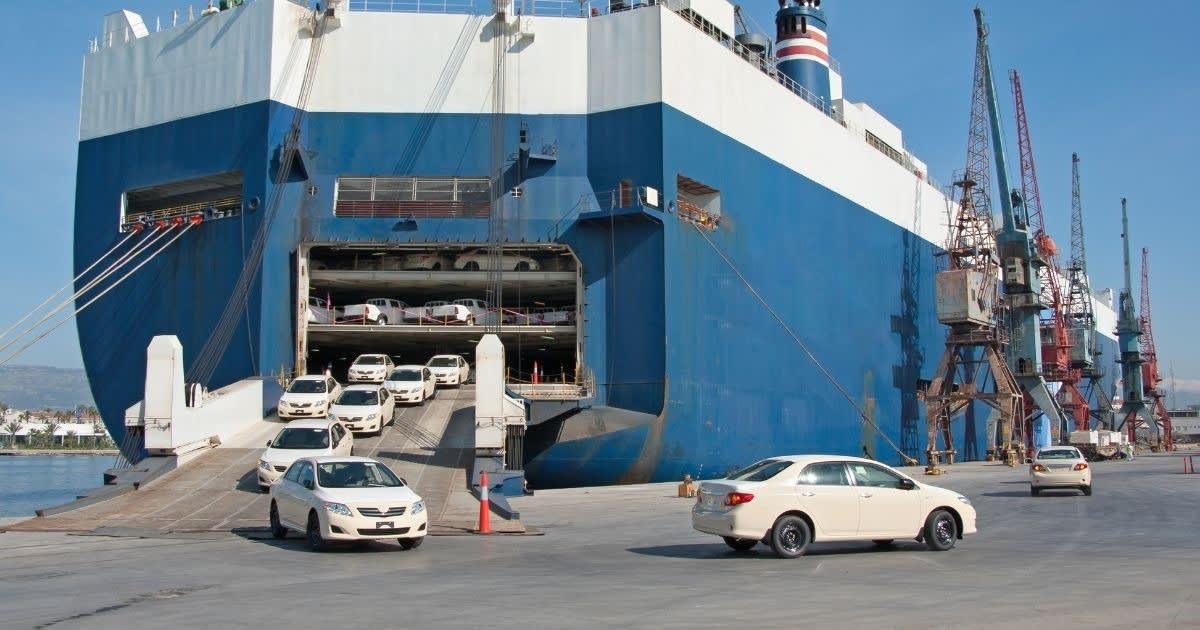Beyond the Horizon: Navigating the Intricate Journey of International Car Shipping

The dream of an international adventure is intoxicating. A new job in a bustling foreign capital, a sun-drenched retirement overlooking the Mediterranean, or the thrill of acquiring a classic car from its European birthplace. In these moments, your vehicle is more than just transportation; it's a piece of your identity, a trusted companion, or a cherished asset. But when an ocean, complex regulations, and thousands of miles stand between you and your destination, a critical question emerges: How do you safely get your car from here to there?
International car shipping is the sophisticated, often-misunderstood answer. This process is a world away from domestic transport, operating at the intersection of global logistics, international law, and meticulous preparation. It is a discipline where success is measured not just by a timely arrival, but by navigating a labyrinth of paperwork and protocols to ensure your prized possession arrives safely, legally, and ready for the road ahead.
The Maritime Passage: Choosing Your Vessel
The first and most significant decision you will face is the method of oceanic transport. This choice is the primary determinant of the level of protection your vehicle will receive during its sea voyage. Understanding these options is crucial to matching the service to your vehicle's value and vulnerability.
Roll-On/Roll-Off (RORO): The Efficient Commuter of the Seas
Picture a colossal, specialized cargo ship designed not with cranes, but with massive ramps. Your vehicle is driven—or rolled—by a port agent onto the vessel, where it is securely parked in a dedicated spot among hundreds of other cars, much like a multi-story floating garage. This is RORO shipping.
It is often the most streamlined and economical method for standard, operational vehicles. Your modern sedan, SUV, or truck is a perfect candidate for RORO. It is a highly efficient system built for volume. However, it is essential to understand that your vehicle will be exposed to the marine environment—salt air, moisture, and weather—for the duration of the crossing. It is a robust and reliable solution for a car that is built to handle the elements.
Container Shipping: The Fortified Vault on the Waves
For the ultimate in security and protection, container shipping is the unequivocal gold standard. Your vehicle is carefully loaded into a standard 20-foot or 40-foot steel shipping container. Once inside, it is immobilized using specialized straps and chocks, and the container doors are sealed with a unique, numbered bolt seal.
This method offers near-total isolation from the harsh marine environment, salt spray, and physical handling. For high-value, classic, or exotic automobiles, this is the only prudent choice. It transforms the journey from a shared transit into a private, fortified passage. An added advantage is the ability, within strict limits and regulations, to ship certain personal effects in the same container, making it a practical solution for those moving a household.
The Paper Trail: The True Map of Your Journey
If the ocean voyage is the body of international car shipping, the documentation is its lifeblood. This is the realm where dreams can be delayed, but with proper guidance, becomes a manageable process. The required paperwork varies dramatically by destination country, but several core documents are universal.
The non-negotiable cornerstone is a clear, unambiguous Certificate of Title. This proves you are the legal owner with the right to export the vehicle. You will also receive a Bill of Lading, which acts as the receipt and contract for the carriage of your car.
The most critical phase begins upon arrival: Customs Clearance. This is where you prove the vehicle's admissibility to its new country. You will need to provide documentation such as a Commercial Invoice and often proof of insurance and registration. Crucially, many countries have stringent Import Regulations regarding vehicle age, emissions standards, and safety modifications. Researching these requirements is not a suggestion—it is an absolute necessity that can mean the difference between a smooth entry and a vehicle refused at the border.
The Unseen Clock: Understanding the Timeline of a Global Move
Patience is the most vital virtue in international vehicle shipping. The process is a marathon composed of distinct, time-consuming stages, and understanding this timeline is key to managing expectations.
Phase One: The Pre-Departure Preparations. This stage involves finalizing all documentation, preparing your vehicle to meet both export and import standards, and transporting it to the port of origin. Depending on the complexity of your paperwork and vehicle modifications, this can take several weeks.
Phase Two: The Ocean Voyage. The actual sea transit is often the most predictable segment. A crossing from the U.S. East Coast to Northern Europe might take 10-14 days, while a journey to a port in Asia could take 3-5 weeks. Weather and global shipping routes can cause minor adjustments.
Phase Three: Port Operations and Customs Clearance. This is frequently the most variable and lengthy part of the process. Once your car arrives, it must be offloaded, processed through the port authority, and cleared through customs. Delays here are common due to port congestion, customs inspections, and the meticulous verification of your documentation. This phase can easily take another one to three weeks, sometimes longer.
Preparing Your Vehicle for its Global Voyage
Your car is not a passive passenger; it must be prepared for its journey. Proper conditioning is a critical step in ensuring a smooth transition from one shore to another.
The Forensic Clean and Digital Dossier Thoroughly clean your car, inside and out. This is not for vanity, but for inspection. A spotless vehicle makes it easy to identify every pre-existing scratch, dent, or imperfection. Accompany this with a comprehensive, time-stamped photographic and video dossier of the vehicle from every conceivable angle. This visual record is your first and most powerful line of defense.
The Mechanical Mandates For RORO shipping, your vehicle must be in operable condition to be driven on and off the ship. Check fluid levels and tire pressure. Critically, the fuel tank must be nearly empty—typically no more than 1/4 full. This is a non-negotiable international safety regulation to reduce fire hazard. For all shipments, disconnect the battery to prevent drain and disable any alarm systems that could be triggered during transit.
The Absolute Ban on Personal Belongings This rule is paramount. You must remove all personal items from your vehicle. International carriers explicitly forbid this for security, safety, and customs reasons. Customs officials in the destination country may suspect you are attempting to import goods illegally, leading to significant delays, steep fines, or even the seizure of your entire vehicle.
The Final Frontier: Arrival and The Road Ahead
The day your vehicle is cleared and ready for pickup at the destination port is a moment of triumph. However, your diligence has one final, crucial act. The delivery inspection is your last checkpoint.
With your initial photographic dossier and Bill of Lading in hand, conduct a meticulous, inch-by-inch inspection of the vehicle before you sign any release documents. Look for any new damage that may have occurred during the voyage. Only once you are completely satisfied should you complete the final paperwork and take possession of your car.
International car shipping is a testament to human ingenuity and global connectivity. It is a complex ballet of massive ships, intricate regulations, and careful planning, all orchestrated to deliver your personal vehicle to a new corner of the world. By understanding the journey, respecting the process, and preparing thoroughly, you transform a daunting logistical challenge into a seamless bridge to your next great adventure. Your car awaits, on a new continent, ready to help you explore all the roads that lie beyond the horizon.
Categorías
Read More
In the construction industry, where tight budgets and strict deadlines define project success, the role of accurate cost estimation cannot be overstated. Whether it’s a residential development, commercial building, or large-scale infrastructure project, every decision relies on precise figures for labor, material, and overhead costs. This is where a professional construction estimating...

Perched in the lush hills of South Sikkim, Namchi is a soulful town that blends panoramic views, sacred landmarks, and cultural richness. Popular tourist attractions in Namchi include towering statues, serene monasteries, vibrant gardens, and sweeping vistas of the Kanchenjunga range. Whether you're a pilgrim, nature lover, or peace-seeking traveler, Namchi offers a tranquil yet inspiring...



